Description
Casio’s uniquely powerful early-digital synthesiser • 3 digiwave oscillators with complex, involving waveforms, each with its own modulation and envelope controls • 80 factory patches plus instant patch creation with the Glitch button • Truly unusual sound palette – grainier and airier than FM or LA • Shifting, morphing soundscapes a speciality!
![]()
Released in 1987, the HT-6000 came just as Casio was making a determined effort to carve out a swathe of the pro audio market. Machines like the CZ-1 phase distortion synth had already staked a claim, suggesting that Casio needn’t just be known for home keyboards; the follow-up FZ-1 sampler was a real eye-opener, offering 16-bit sampling at a shocking low price. Clearly Casio had serious designs on studio space – which makes the arrival of the HT-6000 all the more confusing.
On the one hand, it boasted some truly impressive on-paper spec: four digital oscillators each capable of generating 32 different waveforms, plus analogue filters and decent modulation capabilities. On the other hand, it had built-in speakers and an overall vibe that uncertainly straddled the line between studio synth and home keyboard. Probably as a direct result of this, it failed to make a significant mark in either arena, and now remains something of a cult keyboard – largely forgotten, and all but buried under a landslide of DX7s and D50s.
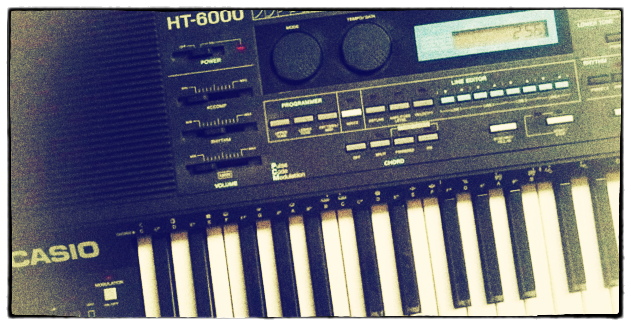
This is a shame, because the sounds the HT-6000 can produce are genuinely unusual by 80s standards: thick and grainy in the low end and airy in the highs, they sound neither like the shininess of Yamaha’s FM nor the chiffiness of Roland’s LA. In fact, the combination of analogue circuitry in the filter path and what are clearly quite low-resolution bitstreams from the digital oscillators yields something totally different, and which we like a lot.
The original HT-6000 made several compromises in its sound architecture, most notable of which was that those impressive-sounding four oscillators could only play one waveform between them (though you could, at least, detune them against each other). We’ve therefore made several improvements to the structure: centrally, we now have three oscillators instead of four, but freely assignable to any of the 32 waveforms – so you can generate richly complex sounds very easily. Just as importantly, each oscillator has its own envelope, pitch, detune, drive, High Pass Filter and LFO controls: tweaking these can introduce everything from slow tonal shifts and washes to clangy attack-driven patches that then mellow in their decay.
Furthermore, we have a comprehensive multi-mode Low Pass Filter circuit, switchable between 2-pole and 4-pole mode; using this in conjunction with the individual High Pass Filters can give you neat band-pass effects. Helping to add heft and texture are the Sub Oscillator (a digital sine-wave from the Ensoniq SQ-80) and an analogue White Noise circuit. Round the back is a comprehensive Effects Rack, and various performance modulation options so you can patch MIDI velocity to cutoff or amplitude, and set your Mod Wheel vibrato the way you like.
Of course, getting the HT6000 to do new and exciting things is just a button-press away: the Glitch Control has its own little space on the front panel and is itching to be clicked! “Musically-randomised” patches are incredibly easy to generate, and if you want to go deeper, the control set is laid out for easy tweaking.
The glory of the HT-6000 lies in its marginal status: largely ignored, even more largely forgotten, it nevertheless creates a beguilingly idiosyncratic sound. Now, liberated from its original restrictive architecture, that sound can rival any Yamaha or Roland for versatility – but with an individual, unusual tone that mimics neither. We really like this strange machine, and we hope you do, too!
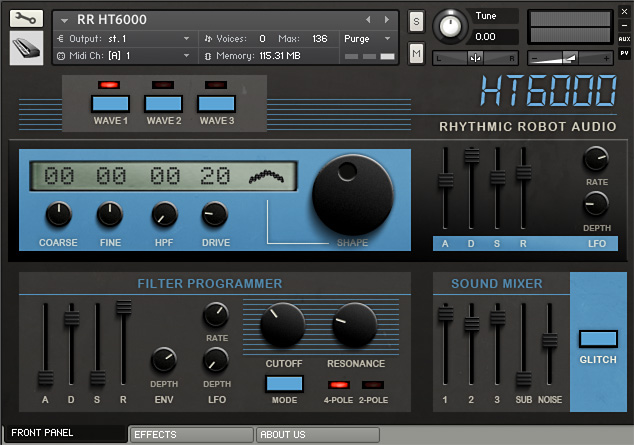
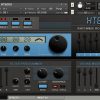
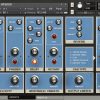
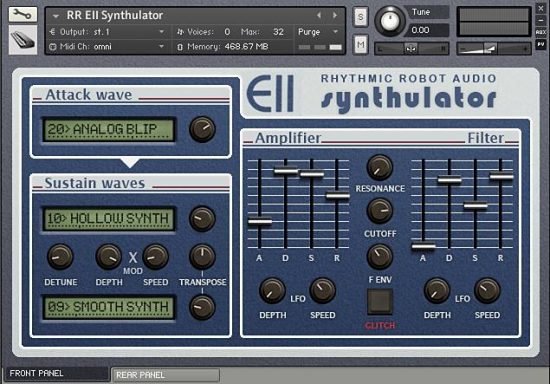
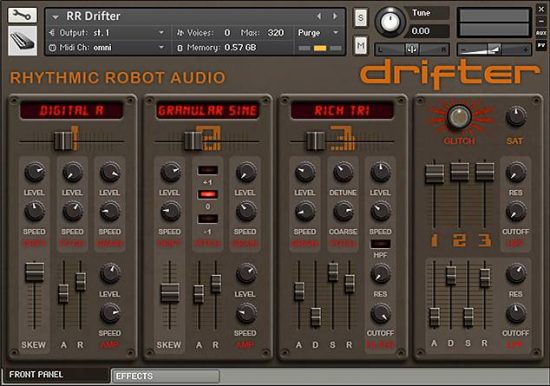
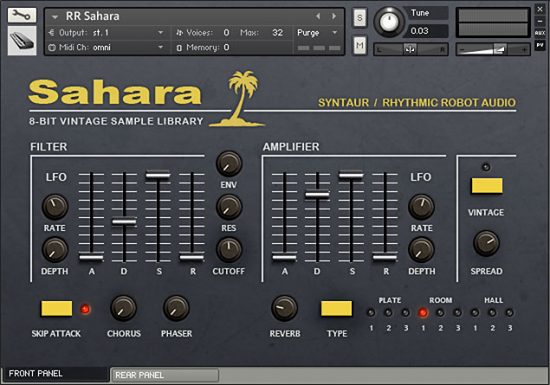
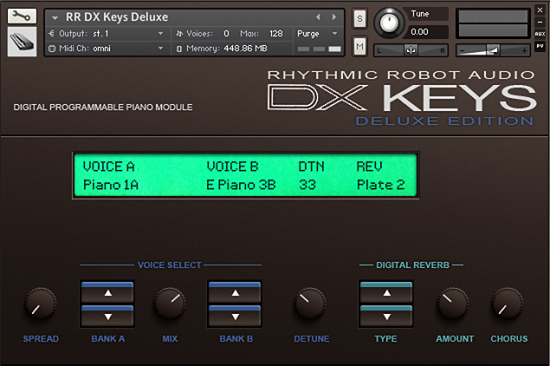
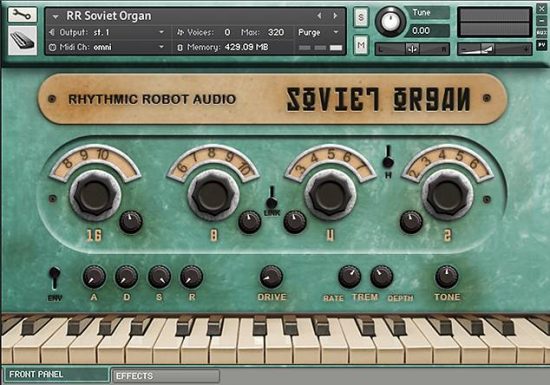
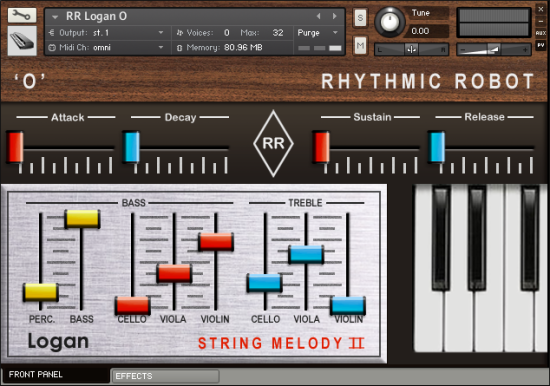
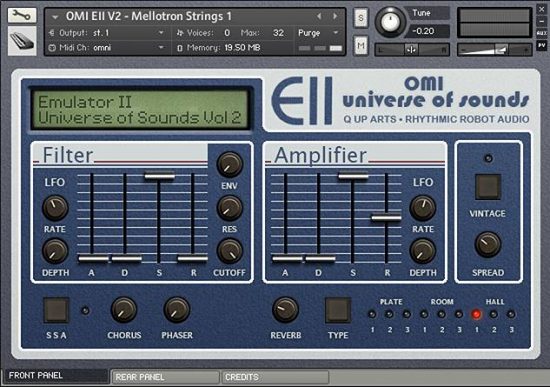
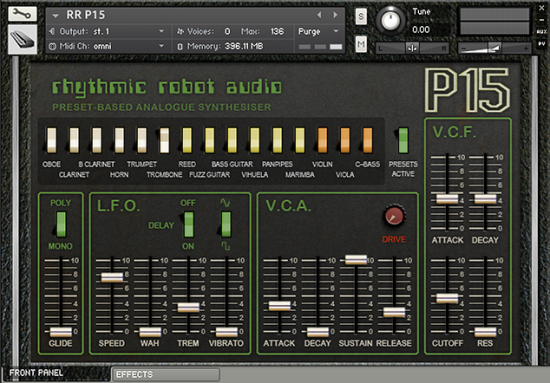
W.TaylorRiley (verified owner) –
Simple yet complex. Digital yet lifelike. Kinda like RR themselves haha. give them your money so they can keep building awesome kontakt instruments!!!
aqaraza (verified owner) –
RR HT6000 is a beauty of an instrument. It is layered and complex, but clearly aims at and hits a range of sounds that is direct. This turns out to be the last one I’m purchasing for now while on a bit of a discovery spree during their sale, and I think it’s a fitting one. First some practicalities, then some philosophy. (Since this is my last review for a while as I recover from my RR fever, I’ll let it run long.)
As I’ve explored their instruments, I’ve come to love the in-depth descriptions RR gives to each one. It was one of the first things I noticed. This is a mirror of the care they seem to put into each. In the case of the HT6000, for instance, they went and grabbed a sine wave from another instrument (but one of compatible style, the Ensoniq SQ-80, from which they also carefully culled the drum machine AAAAAAA!), just to give the HT6000 a sub-oscillator!
In Bitwig, tootling merrily away on my midi test for it, I am struck by its character and versatility. The ever-coveted glitch/rnd button has allowed me to find an amazing little tonality that is giving me a two-tone version of my melody that I would never have arrived at on my own. It has wobble and heft, and it feels like a transistor has met a microprocessor deep in the plastic case of this hybrid sonic moment in time, and decided the only thing for it is to do a duet to capture the moment forever. Or at least until someone hits the power. But the voice is ephemeral and surefooted, like a plucky sprite leaping a chasm. Forward-looking and nostalgic, like any transitional instrument that knows it’s bound to be a stepping stone for something greater. In fact, why not, here it is.
https://soundcloud.com/heath-rezabek/2019-0201-rr-ht6000-test-loop
Now some philosophy. It strikes me that instruments and heck ANYTHING like the Casio Ht-6000 as described, is a really really special thing! It was clearly designed to be a gateway device, probably for Casio’s bottom line, but in reality for musicmaking itself for anyone who got one at the time. I am probably the kind of hobbyist, just waiting to have my hands on the tools it would take to bootstrap my efforts into a higher realm, that the HT6000 was aimed at. As I’ve looked back at the history of early electronic music, there seems to have been this constant process of ephemeral revolution and discovery, each leap laying the groundwork for what comes next. How the CMI came to utterly shape a 4 year or so window in time before instruments that dove straight for the pricepoint sweet-spot (like the Casio HT-6000 was) moved things on. (For instance, as the e-Mu Emulator II did to the CMI.) But it’s as if every instrument tried in its way to be the Velvet Underground of musicmaking for SOMEone! And our whole current approach to electronic music is built on that rag-tag hodge-podge of little plastic revolutions.
Luckily, at that time, they left behind physical artifacts and vintage gear to be rediscovered, as RR does with so many of these instruments. Now, so much is in software that I have to pause and wonder. What eldritch nested emulator will be needed in 50 years to resurrect the stepping-stones we’re laying now? (It also makes want to get a hardware synth. But I have to resist.)
I’m really thankful for Rhythmic Robot, and their insistence on resurrecting the oddest things and most genuine outliers they can possibly find. In their own way, and at the seductively reasonable pricepoints they’re hitting, it is possible to experience this feeling of raw possibility just within reach… once again.
Terence (verified owner) –
I had a few of the HT series back in the tail end of the 80’s. I briefly owned a 3000 and its baby brother, the 700, as well as this, the superior 6000 and they certainly were a bit of an odd beast. The decision to include built in speakers and auto-accompaniment to appeal to the home market, but also giving it Midi (even on the diminutive 700) and making it sonically impressive enough to be used in a studio or live setting, meant it never really found a place in either. This thing could produce sounds that ranged from gritty and grainy, through to clinically sterile. However, despite struggling with it’s own identity crisis, it was fun to use and capable of pushing out some great sounds.
OK. History lesson over, lets take a brief look at this Kontakt Library. I have to say, RRA really captured the essence and the character of the HT series and they have managed to nail down the sound and cram it into a neat library for everyone to enjoy. As I have come to expect from RAA, the GUI/layout is easy on the eye and simple to navigate. The inclusion the “Glitch” button, for randomly generating new sounds, is also nice. The included effects are nothing to write home about, but they are functional, however, I will point out that the included Cabs are a nice touch. All in all, this is a great library and I got a little dewy eyed when I was picking through the patches – the sounds transporting me back to a time when life was just a little less complicated.
Thanks to Mongo and The Professor for giving me a glimpse of a somewhat ‘forgotten’ period of my life. While the HT series may not be remembered by the masses with the same affection as its Roland and Yamaha contemporaries, I will always have a soft spot for them.